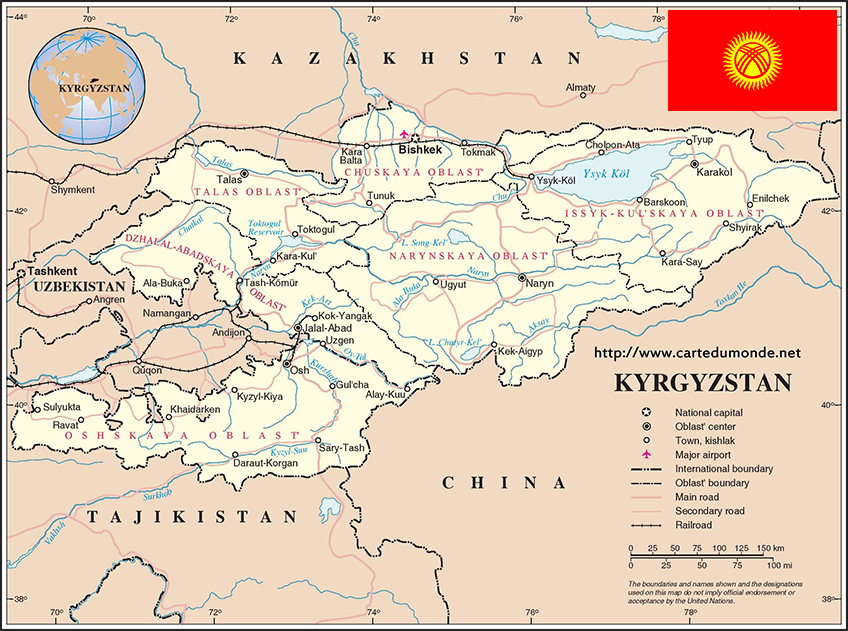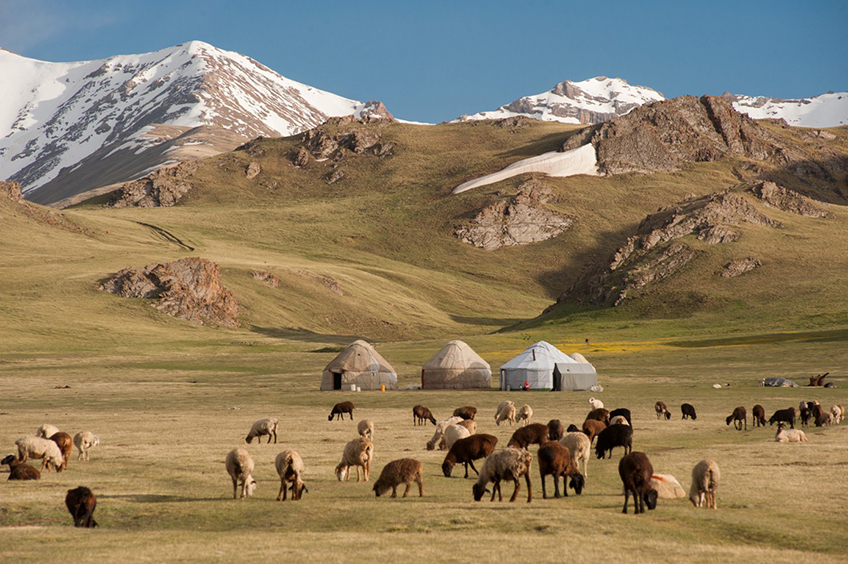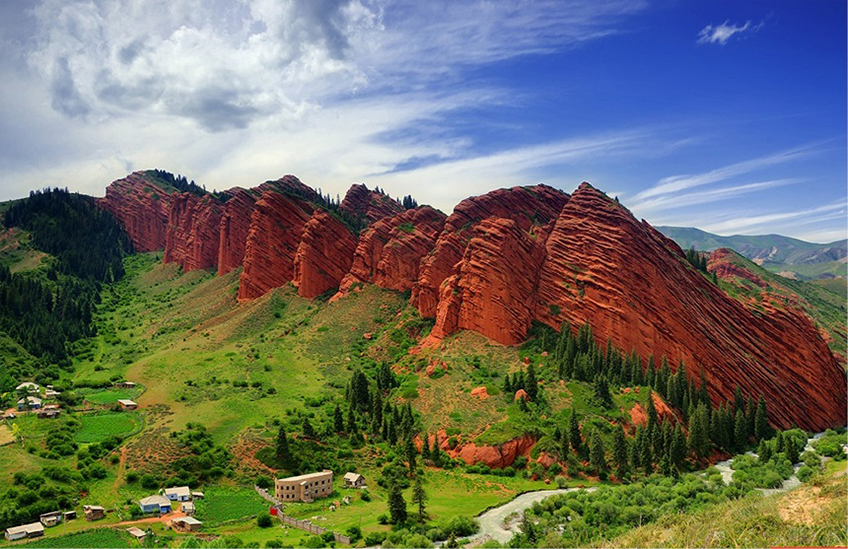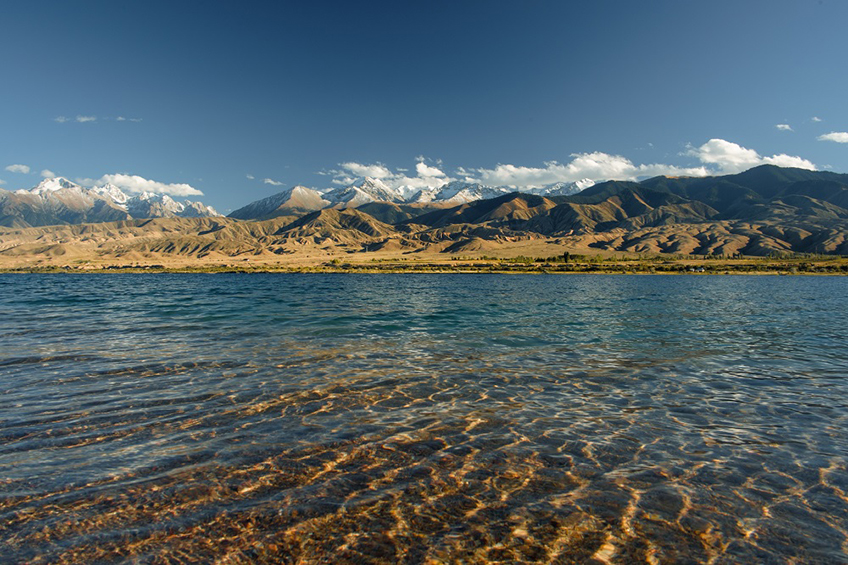Kyrgyzstan Geography

Kyrgyzstan, land of mountains and lakes – gorgeous nature, fantastic people, great adventures!
Kyrgyzstan is located in the very heart of Central Asia on the Great Silk Road, and has been praised by many poets and philosophers of the East. This area of the world is fast becoming a prime tourist destination as many people are now interested in understanding more about the history of the people living here.
You can visit the lake of Issyk-Kul , known as the Pearl of Central Asia, and the snowy peaks of the majestic Ala-Too mountains, which attract mountain climbers and rock climbers from all over the world. A number of ski bases are also now welcoming visitors. Adventure tourism, such as trekking, hunting and rafting, are also on offer. Should you visit Kyrgyzstan, you will receive a very warm welcome and cherished memories. We hope that once you visit, you will want to return!
Placed along the Great Silk Road, Kyrgyzstan developed into a junction of trade and cultural traditions between China, Iran, India, Arabian Sea and the Western world, and, consequently, a home for over 80 ethnicities. Kyrgyz handicrafts have been made through the ages and are bound up with the necessities and the nomadic lifestyle of the Kyrgyz people. A life in an unspoiled wilderness, its snow-covered mountain tops, fast-flowing rivers and flower-covered valleys, has created the character and delicate artistic taste of the Kyrgyz people. Handicraft can’t be separated from the private life of people, because of their daily needs and spiritual demands. The aspirations of the Kyrgyz people for beauty led them to create different kinds of handicrafts, such as, felt carpets with patterns and commodities of felt; patterned, woven mats of steppe plants – Chee, wrapped around by colorful woolen yarn, patterned weavings, embroidery (leather, felt, wool, silk and cotton cloth, kurak – a panel of stuffed pieces of cloth, different leather goods, woodcarving, artistic processing of metal, hand weaving of wool and silk (belts, braids, fringe, laces). Furthermore, the Kyrgyz masters have developed a special technique of silver jewelry production and preserved it till nowadays. The Kyrgyz culture has been greatly influenced by the nomadic heritage. It is reflected in the way a household was run, in customs, and rites. People decorated their homes with items that were both beautiful and practical. The masterpiece of folk creation is the Kyrgyz yurta (yourt, yurt, tent), which was easy to assemble and transport from place to place.

The great „Manas“ epos plays a starring role in the culture of the Kyrgyz people. The epic hero Manas is a people’s hero personifying power, freedom and unity of the Kyrgyz people. Oral legends of Manas were delivered from a generation to generation for centuries and finally have developed into an epos containing over 500 000 poetic lines. The „Manas“ epos is considered the largest epic work in the world. Furthermore, the „Manas“ epos serves a Code of traditional laws and provisions regulating the day-to-day life of the Kyrgyz people. Some provisions of the epos have grounded basis for developing of a national unity ideology in modern Kyrgyzstan. The traditions order the Kyrgyzs to treat and give presents to any guest coming into a house. If a Kyrgyz did not offer a guest some food, it would be considered a severe insult. And vice versa, if a guest refused the food, even a cup of tea, he would strongly offend the host. This tradition has become so prevalent that is followed by representatives of other ethnic group living in the Kyrgyz Republic. Some other ancient traditions which are kept popular in modern Kyrgyzstan – a celebration of a child birth named „Jentek-toy“ or another joyful event „Tushoo Kesoo“ („Circumcision of fetters“) – a celebration of a child’s birth anniversary. A Kyrgyz holiday of spring and renovation – “Nooruz” – is celebrated by the entire people of Kyrgyzstan despite their ethnic and religious background.

